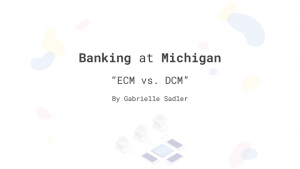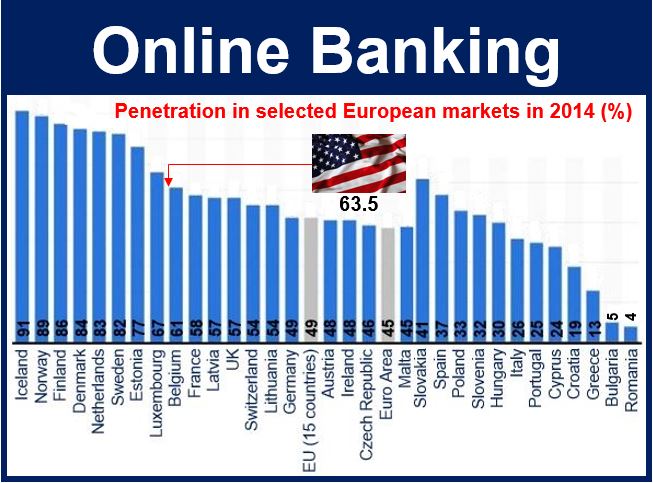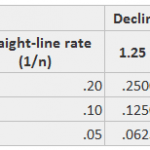
Additionally, Entera can discover market trends, match properties with an investor’s home and complete transactions. Quantitative trading is the process of using large data sets to identify patterns that can be used to make strategic trades. AI-powered computers can analyze large, complex data sets faster and more efficiently than humans. The following companies are just a few examples of how artificial intelligence in finance is helping banking institutions improve predictions and manage risk. Zest AI is an AI-powered underwriting platform that helps companies assess borrowers with little to no credit information or history.
Personalized banking experience

This entails the questionnaire, model proposal, and the management of the portfolio. Companies that take their time incorporating AI also run the risk of becoming less attractive to the next generation of finance professionals. 83% of millennials and 79% of Generation Z respondents said they would trust a robot over their organization’s finance team. Millennial employees are nearly four times more likely than Baby Boomers to want to work for a company using AI to manage finance. Traditionally, financial processes, such as data entry, data collection, data verification, consolidation, and reporting, have depended heavily on manual effort.

Table of contents
There are, however, some aspects of this subject that are unexplored yet or that require further investigation. In this section, we further scrutinise, through content analysis, the papers published between 2015 and 2021 (as we want to focus on the most recent research directions) in order to define a potential research agenda. “Identification of the major research streams”, we report a number of research questions that were put forward over time and are still at least partly unaddressed. Additionally, as remarked by Ernst et al. (2018), whilst industrial robots mostly perform manual tasks, AI technologies are able to carry out activities that, until some years ago, were still regarded as typically human, i.e. what Ernst and co-authors label as “mental tasks”.
- All the forecasting techniques adopted (i.e. supervised machine learning and ANNs) outperform linear models in terms of efficiency and precision.
- With the visible benefits, there are several financial services organizations that are exploring AI-based fraud prevention.
- Specific software, such as enterprise resource planning (ERP,) is used by organizations to help them manage their accounting, procurement processes, projects, and more throughout the enterprise.
- In this paragraph, we shortly illustrate some relevant characteristics of our sub-sample made up of 110 studies, including country and industry coverage, method and underpinning theoretical background.
A new frontier in artificial intelligence and for Finance
Finally, a smaller number of papers address underdeveloped regions in Africa and various economies in South America. Here are a few examples of companies providing AI-based cybersecurity solutions for major financial institutions. Thanks to our incredible team of experts, we’ve built a collaborative space where you can constantly develop and grow in a supportive way.
Companies Using AI in Quantitative Trading
Yet former Cisco CEO John Chambers recently told The Wall Street Journal that history is not repeating itself. The market for AI could equal “the internet and cloud computing combined,” he said, noting the speed of change and timing of Nvidia’s ascent is different from Cisco’s. Some experts have compared Nvidia to Cisco, the network hardware company whose stock ballooned during the dot-com bubble before ultimately crashing. “At 23 times 2024 expected earnings, the market-cap weighted S&P 500 is froth with excess and, in my judgment, uninvestable.”
Prior to joining MIT Technology Review, Elizabeth held a senior executive role at The Economist Group, where her leadership stretched across business lines and included mergers and acquisitions; editorial and product creation and modernization; sales; marketing; and events. Earlier in her career, she worked as a consultant advising technology firms on market entry and international expansion. Under her leadership, MIT Technology Review has been lauded for its editorial authority, its best-in-class events, and its novel use of independent, original research to support both advertisers and readers. Robust compute resources are necessary to run AI on a data stream at scale; a cloud environment will provide the required flexibility.
American insurance company Lemonade uses AI for customer service with chatbots that interface with customers to offer quotes and process claims. A good example is when its AI claims processing agent (AI-Jim) paid a theft claim in just three seconds in 2016. The company reiterates that currently, it can settle around half of its claims by employing AI technology. For example, robo-advisory platforms like Wealthfront and Betterment use AI algorithms to automate investment recommendations and portfolio management.

AI can offer personalized financial advice and guidance based on individual customer profiles and preferences and assist users with budgeting, financial planning, and investment decisions. AI, ML, and natural language processing (NLP) help financial institutions identify borrowing patterns to reduce the risk of non-repayment. Naturally, loan officers do not have to rely on their intuition and can make better data-driven decisions to reduce bank fraud detection. accounting test 3 module 5 quiz flashcards Plus, AI-powered document processing software can compile specific information from the documents at scale. Thus, it expedites the decision-making process, making it more fair and boosting customer experience. The first two decades of the twenty-first century have experienced an unprecedented way of technological progress, which has been driven by advances in the development of cutting-edge digital technologies and applications in Artificial Intelligence (AI).
The business leaders within the institution reiterate the edge of AI algorithms over traditional models, offering an unmatched level of sophistication. For example, the US-based FinTech company Zest AI reduced losses and default rates by 20%, employing AI for credit risk optimization. Financial institutions get real-time data analysis and insights with AI-powered analytics and predictive modeling. Yet another critical aspect of the financial industry is compliance with regulations.
Sameena Shah is a Managing Director, Artificial Intelligence Research in Digital & Platform Services, where she and the team work across the firm to create Artificial Intelligence technologies for business transformation and growth. https://www.quick-bookkeeping.net/ She is a highly accomplished leader with over 20 years of educational and industry experience in AI, engineering, data. Her leadership has resulted in award-winning AI technologies that have transformed products and businesses.
Founded in 1993, The Motley Fool is a financial services company dedicated to making the world smarter, happier, and richer. The Motley Fool reaches millions of people every month through our premium investing solutions, free guidance and market https://www.personal-accounting.org/what-is-a-flexible-budget/ analysis on Fool.com, top-rated podcasts, and non-profit The Motley Fool Foundation. Exposure modeling estimates the potential losses or impacts a financial institution, or portfolio may experience under different market conditions.
The market value of AI in finance was estimated to be $9.45 billion in 2021 and is expected to grow 16.5 percent by 2030.
For this reason, subsequent studies ought to provide a common platform for modelling systemic risk and visualisation techniques enabling interaction with both model parameters and visual interfaces (Holopainen and Sarlin 2017). Bankruptcy and performance prediction models rely on binary classifiers that only provide two outcomes, e.g. risky–not risky, default–not default, good–bad performance. These methods may be restrictive as sometimes there is not a clear distinction between the two categories (Jones et al. 2017). Therefore, prospective research might focus on multiple outcome domains and extend the research area to other contexts, such as bond default prediction, corporate mergers, reconstructions, takeovers, and credit rating changes (Jones et al. 2017). Corporate credit ratings and social media data should be included as independent predictors in credit risk forecasts to evaluate their impact on the accuracy of risk-predicting models (Uddin et al. 2020). Moreover, it is worth evaluating the benefits of a combined human–machine approach, where analysts contribute to variables’ selection alongside data mining techniques (Jones et al. 2017).

